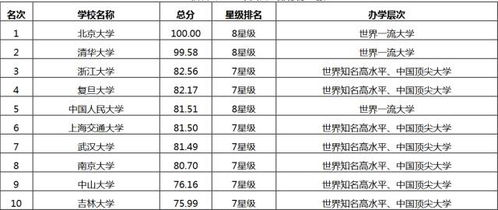When it comes to choosing the right high school, understanding nationwide rankings can be crucial. Every year, various organizations and educational institutions release comprehensive lists of the top high schools in the country. These rankings help parents and students make informed decisions about their education. In this article, we will delve into the methods used to rank high schools, the top schools in these rankings, and what makes these institutions stand out.
Factors Influencing High School Rankings

There are several factors that organizations take into account when ranking high schools across the country. Firstly, academic performance is a significant parameter. This involves looking at standardized test scores, college entrance exam results (such as the SAT and ACT), and Advanced Placement (AP) or International Baccalaureate (IB) course offerings and pass rates. Schools with high academic achievements often rank higher.
Another critical factor is the school's resources and facilities. High schools that provide state-of-the-art laboratories, libraries, and extracurricular facilities tend to attract more attention. Furthermore, the quality of teaching staff significantly impacts a school's ranking. Highly qualified and experienced teachers, along with ongoing professional development opportunities, often correlate with better student outcomes.
Additional factors include student-teacher ratios, college admission rates, and the overall learning environment. Some rankings also consider student feedback and parent reviews, providing a more holistic view of the school's performance. By examining these factors, ranking organizations attempt to offer a comprehensive perspective of the nation's top high schools.
Top-Ranked High Schools in the Nation
Every year, a handful of high schools consistently emerge at the top of national rankings. Schools like Thomas Jefferson High School for Science and Technology in Virginia, Phillips Academy in Massachusetts, and Stuyvesant High School in New York are regular contenders. These institutions are known for their rigorous academic programs, exceptional faculty, and high college placement rates.
Thomas Jefferson High School, for instance, is renowned for its emphasis on science, technology, engineering, and mathematics (STEM). It boasts a highly selective admissions process and offers students a wealth of advanced courses and research opportunities. Similarly, Phillips Academy, often referred to as Andover, provides a challenging and comprehensive liberal arts curriculum, coupled with strong support for extracurricular activities.
Stuyvesant High School, located in the heart of New York City, is another competitive school famous for its strong academic performance. With a focus on mathematics and science, Stuyvesant has produced numerous notable alumni who have excelled in various fields. The rigorous entrance exam ensures that only the most dedicated and capable students gain admission, contributing to its high ranking.
Apart from these, schools like The Lawrenceville School, School for the Talented and Gifted in Texas, and Harvard-Westlake School in California also feature prominently in national rankings. Each of these institutions offers unique strengths, whether it is through specialized programs, exceptional teaching staff, or a commitment to student development and success.
Why High School Rankings Matter
Understanding high school rankings can provide valuable insights for parents and students. A high-ranking school often signals a commitment to excellence in education, which can lead to better preparedness for college and future careers. Additionally, attending a top-ranked high school can open doors to prestigious universities and scholarship opportunities.
However, it is essential to recognize that rankings are just one aspect of choosing the right school. While a high ranking can indicate overall quality, personal fit and specific educational needs should also play a significant role in decision-making. Visiting schools, talking to current students and teachers, and considering individual interests and goals are crucial steps in making an informed choice.
In the end, the goal is to find a high school that not only ranks well but also aligns with the student's learning style and aspirations. This holistic approach ensures that the educational experience is both fulfilling and comprehensive.
Q&A
Q: What factors are most critical in high school rankings?
A: Critical factors in high school rankings include academic performance, school resources and facilities, quality of teaching staff, student-teacher ratios, college admission rates, and overall learning environment.
Q: Can attending a top-ranked high school impact college admission chances?
A: Yes, attending a top-ranked high school can enhance college admission chances as these schools often provide rigorous academic programs and strong college placement support.
Q: Are there significant differences between public and private schools in rankings?
A: Public and private schools often have different strengths, and rankings can reflect these differences. Private schools might offer more specialized programs and individualized attention, while public schools may excel in diversity and resource availability.
Q: How can parents and students use high school rankings in their decision-making process?
A: Parents and students can use rankings as a starting point to identify top schools, but should also consider personal fit by visiting schools, talking to current students and teachers, and evaluating specific educational needs and goals.
Q: Are high school rankings the only factor to consider when choosing a school?
A: No, while rankings provide essential information about school performance, they should be considered alongside other factors like personal fit, specific academic interests, and the overall learning environment to make the best decision.









